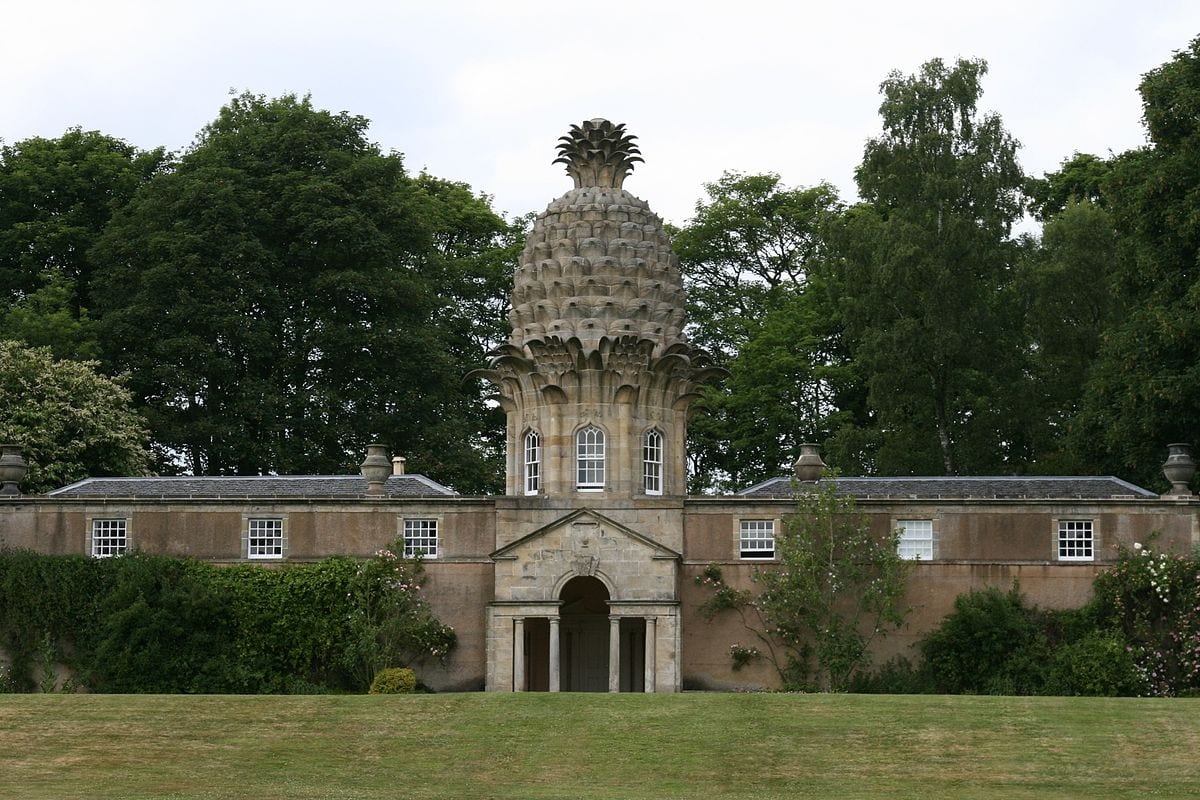
Where Strange Fruit Meets Eating Out: Food Studies at Melbourne
Pineapples as a status symbol in early modern Europe and nineteenth-century Sydney restaurants were the topics of papers presented by the two gastronomes from SHAPS at the 22nd Symposium of Australian Gastronomy in November 2018 in western Sydney.
Academic and former chef Dr Chip Van Dyk presented “Forced fruit: transplanting the tropics in early modern Europe”, exploring the introduction of new and exotic comestibles to early Modern Europe. In his entertaining and broad-ranging presentation Van Dyk detailed how one fruit – the pineapple – captured the European imagination. He documented the new systems and technologies that emerged from attempts by botanical collectors and royal gardeners to propagate this exotic fruit, as well as its popularity as a motif in architecture and decorative arts (such as on the summerhouse at Dunmore Castle, pictured).
Ross Karavis presented initial findings of his doctoral research on “Sydney restaurants before the Great War”. The common perception is that restaurants in Australia are a twentieth-century phenomenon. Karavis countered this perception using evidence from the Sydney Sands Directories, showing that public eateries identifying themselves as restaurants were increasingly common, particularly from the 1880s on. This is the first substantial research being undertaken on documenting the rich culinary culture of Melbourne and Sydney between 1850 and 1914. Karavis also provided two detailed case studies on nineteenth- and early twentieth-century restaurants – Café Français and the Paris House – which had significant impact on Sydney’s culinary culture.
The biannual gathering of food studies academics and thoughtful gourmands was held at the University of Western Sydney in Parramatta on 16 to 18 November 2018 and many of the events and food offerings were inspired by the important role that Parramatta has played and continues to play in Sydney’s history.
Over the last four decades the Symposium has fostered the growth of food studies in Australia by providing researchers with a forum to present and discuss their research. The University of Melbourne has contributed by co-hosting the previous Symposium in 2016 and supporting the involvement of Associate Professor Jacqueline Dutton from Languages and Linguistics as co-organiser.
The Faculty also supports the Food Cultures hub convened by Dr Heather Benbow, which looks at how food, drink and hunger have shaped and defined cultures over time. The hub is part of the Emporium: Cultures of Luxury and Consumption project based at the University of Melbourne, dedicated to the long and rich histories of consumption, production, and consumer practices across time and space.